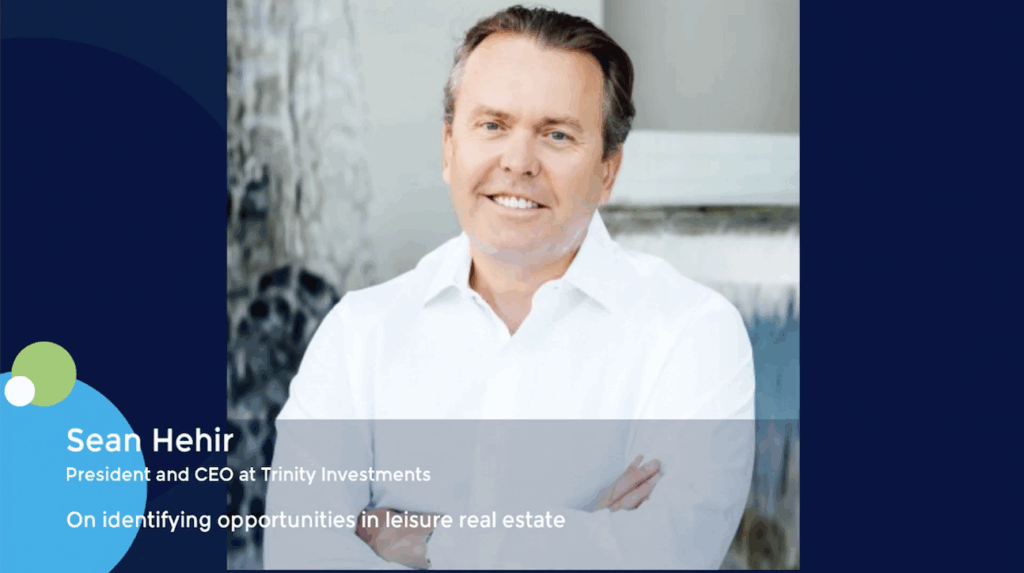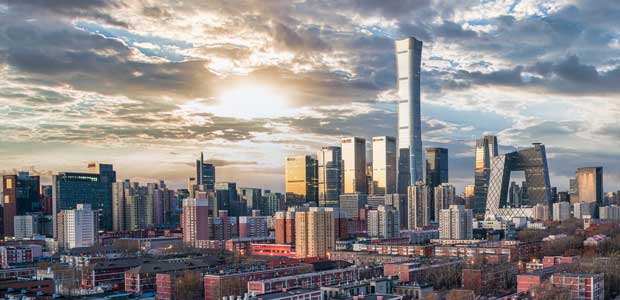Lyfe Capital expands its Asia horizons to tap healthcare supply chain reshuffling
James Zhao, founding partner of healthcare-focused Lyfe Capital, is not especially worried by the US tariff agenda. Rather, he expects to a new wave of deals in Asia as industry supply chains are reshuffled – a trend first identified as a COVID-19 offshoot and now gathering pace.
“Half of the global healthcare supply chain is based in Asia, including China. For us, it’s a private equity opportunity. We are one of few GPs with strong healthcare domain expertise in both the US and Asia, built up over the past 20 years,” Zhao said.
“The healthcare ecosystem plays is important for China in terms of its participation in innovation and global supply chains, but you can’t rely on China as your sole source of supply.”
Onshoring is impractical for healthcare, he added, so the US will continue to rely on international networks. The reality is that the process of building infrastructure and securing Food & Drug Administration (FDA) approval for new sites can take years.
Lyfe is most bullish about Singapore, South Korea, and Japan within Asia. Each offers high-margin, high-automation opportunities in the medical technology and contract development and manufacturing organisation (CDMO) spaces. Singapore’s management talent, Korea’s cutting-edge biologic CDMOs, and Japan’s precision manufacturing expertise are seen as competitive advantages.
Singapore was the location of the sponsor’s first Asia ex-China investment in 2023. It picked up a majority stake in medical devices specialist Fong’s Engineering & Manufacturing from Dymon Asia Private Equity and the founding family. There have also been three deals in Korea and one in Taiwan.
The debut Korea deal, which came later in 2023, involved Jeisys, a manufacturer of medical aesthetic devices. Lyfe exited less than 12 months later when France-based ArchiMed led a take-private of the company. Zhao described Jeisis as a validation of Lyfe’s strategy, without giving further detail on the exit. Subsequent Korea deals include ST Pharm, a listed CDMO business.
The ST Pharm investment was structured as a subscription to convertible bonds. Lyfe did the same with Bora Pharmaceuticals, Taiwan’s largest CDMO. It covered half of a USD 200m euro-denominated bond issue and plans to convert the stake to equity and be a long-term shareholder.
Speaking to AVCJ after the deal closed last year, Zhao said that he and Bora’s founder “share the same vision of developing the company into a truly Asia-originated global player.” This vision is based on the belief that supply chains will shift from the one-region or one-country model to being multi-site and multi-country. Strong integration capabilities are required to make this happen.
China to the world
Lyfe was founded in 2015 in Shanghai – its Chinese name translates as Jifeng Ventures – by Zhao and Drake Yu, formerly of Vivo Capital and IDG Capital, respectively. They met when leading investments for their former employers in Kanghui Holdings, a China-based supplier of orthopaedic implants.
Fund I closed on USD 210m the same year, beating a target of USD 150m. Most of the LPs are regional and global fund-of-funds. Fund II launched in late 2016 and closed in June 2017 on USD 288.8m. The fund-of-funds re-upped, and some brought in their own LPs, including pension funds, endowments, and family offices.
Lyfe raised two renminbi-denominated funds alongside these US dollar offerings. The local currency vehicles had corpuses of CNY 555m (USD 88m) and CNY 900m.
The firm returned to market with its third US dollar fund in 2019, securing commitments of USD 550m. Not long after the final close, Lyfe embarked on a restructuring that led to the separation of its onshore and offshore operations. This was completed in 2021. Zhao retained ownership of the Lyfe Capital brand, while the onshore business took on the name Zhouling Capital.
Zhao no longer sits on the investment committee of the onshore GP, nor does he hold an economic interest in it. He declined to comment on details of the separation.
Yu retained the Jifeng Ventures name for the onshore GP and serves as founding managing partner. According to its website, the firm is a healthcare venture capital firm in China.
Lyfe now positions itself as a global investor that only manages US dollar funds. The most recent of these was raised amid pandemic-related travel restrictions and significant public market volatility. Nevertheless, Lyfe spent only three months in the market. A final close of USD 935m came in April 2022, comfortably above the USD 800m target. The re-up rate was 97%.
Lyfe’s LP base now spans North America, Europe, Australia, Singapore, and Hong Kong. There was more North American institutional investor participation in Fund IV, with Canada Pension Plan Investment Board (CPPIB) among the additions. Co-investment was a key factor.
“We want to create an ecosystem, and co-investment opportunities for our LPs, that can capture and enjoy the future globalisation,” Zhao said.
Lyfe has made over 80 investments to date: 12 from Fund I, and 20, 30, and 20 from Funds II through IV. The latter vehicle is now substantially deployed, and the firm is holding “soft discussions” with LPs about Fund V. Zhao declined to give more detail on fundraising plans.
Portfolio companies that have made it to IPO on NASDAQ include Burning Rock Bio, a cancer diagnostics specialist, Pliant Therapeutics, a late-stage biopharmaceutical player, and Cytek Biosciences, a cell analysis solutions provider.
In Hong Kong, Lyfe has vaccine developer Recbio and medical devices manufacturer Kangji Medical, while the likes of Imeik Technology Development, a materials supplier for soft tissue repair, Easton Biopharmaceuticals, a CDMO, trade on mainland exchanges.
Planned evolution
The geographical split in Funds I and II was 80% China and 20% the US. In Fund III, it shifted to 60% China, 25% US, and 10% Asia ex-China. By Fund IV, the China allocation had fallen to 10%, Asia ex-China was up to 60%, and the US accounted for the balance.
According to Zhao, the evolution in fund size and geographical spread – “a strategically planned and progressively developed process” – reflects Lyfe’s transition into a private equity house and the increasing emphasis on global supply chains.
“Our globalisation started from day one, and it has been well planned over the past 10 years. At the same time, we prepared ourselves to move from growth-stage investment to private equity investment,” he said, noting that Lyfe’s team has also been upsized and upskilled to address different deal types and operational issues.
There are now 36 employees, including 26 investment professionals. Yao Li Ho, a managing director, was hired to build out the firm’s US presence in 2015. His responsibilities now encompass expansion in the US and Asia, and he recently relocated to Japan to work on cross-border opportunities.
Lyfe established a US headquarters in Menlo Park in 2017 and moved its Asia headquarters from Shanghai to Singapore in 2021. Plenty of GPs with Chinese heritage pursued Southeast Asia expansion during COVID-19. Lyfe claims to be one of the few still committed to this endeavour, while offices opened in Seoul and Tokyo in the past two years.
The Fong’s Engineering breakthrough was the culmination of a year-long engagement with the founders. The sourcing process, which began in 2021, leveraged Lyfe’s domain expertise built on past investments in the surgical and endoscopy space, such as Kanji and Aohua Endoscopy.
The firm claims its operational improvement capabilities emerged even earlier following the 2018 investment in Imeik. The company listed in Shenzhen in 2020 and subsequently acquired a 25% stake in Huons BioPharma, a Korea-based botulinum toxin maker. Lyfe played a role in this deal, which was predicated on product co-development.
“Even though we didn’t directly invest in the South Korean company, the transaction was a joint effort with Imeik and we participated in all the due diligence and the negotiations,” Zhao said.
Other portfolio companies have received support in building out supply chains and distributions in different Asian markets and even in Europe. Ho hopes to bring similar propositions to Japan, having noted a third for global expansion among local companies.
“Unfortunately, Japan didn’t build a strong enough talent pool to grow this global footprint and that’s where Lyfe plays very strongly,” he said.
Other mid-market private equity firms have entered Japan through partnerships with domestic GPs, looking to pair their domain expertise with local sourcing and business knowledge. Lyfe is keen to take the same approach as it accumulates insights into the market.
“We are very complementary to local private equity houses,” Zhao added. “We’re bringing a growth engine or global driver that complements what they have to offer.”
An eye to exits
Exit flexibility is another factor in Lyfe’s push into international markets. While liquidity has proved elusive in China as IPO markets have struggled, Japan’s control-oriented private equity industry is more suited to M&A. To Ho, one of the attractions of Japan’s mid-market is the relatively deep and established trade sale and sponsor-to-sponsor sale channels.
Lyfe has completed 40 full or partial exits to date, mostly from Funds I and II. IPOs account for half of these exits and one-quarter are trade sales. The firm has noted increased sophistication in China’s capital market, which has facilitated staged exits by private equity investors.
For example, Fund II and several LP co-investors acquired an 8% position in Imeik from individual shareholders for nearly USD 25m in 2018. As of Q3 2024, it has realised around CNY 5.4bn through several partial exits, securing a 30x return. As of 1Q 2025, the investor group still held a less than 1% stake worth approximately CNY 475m.
Another sizeable liquidity event came with the spurt in M&A by global pharma companies in China in late 2023 and early 2024. Lyfe was one of several investors that participated in a USD 1.8bn payday when Denmark-headquartered Genmab acquired ProfoundBio.
However, Zhao is conscious of the need to deliver consistent returns across fund portfolios rather than rely on infrequent home runs – further evidence of the evolution from venture capital to private equity. Sensible portfolio construction is the starting point.
“We need to carefully evaluate our liquidity paths and the timing of our liquidity events,” he said. “We want to deploy the capital in a way that fits our strategy and allows us to demonstrate predictable and sustainable liquidity.”













